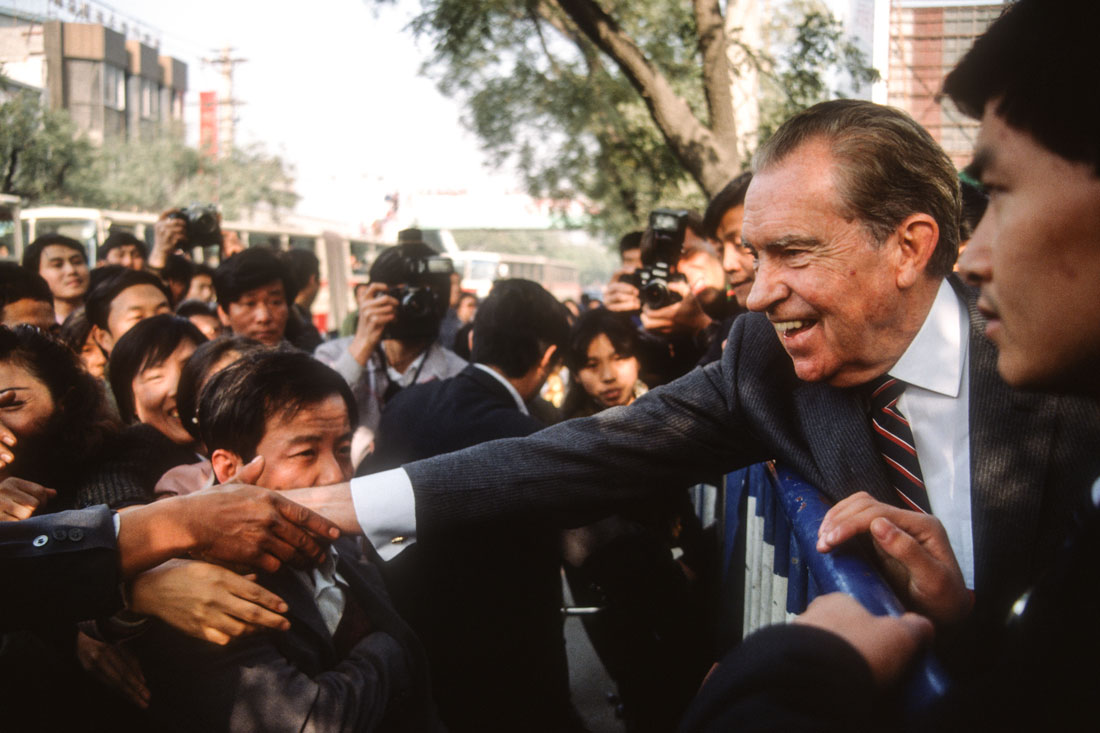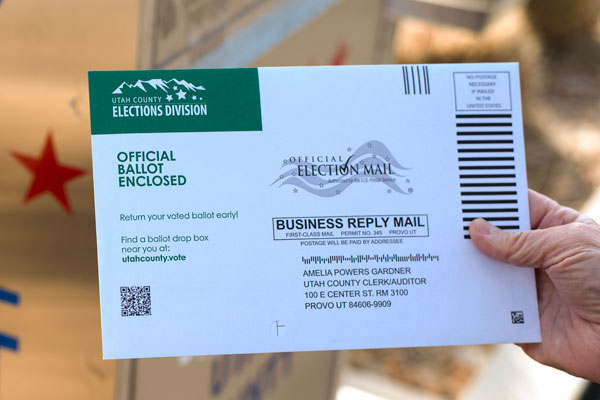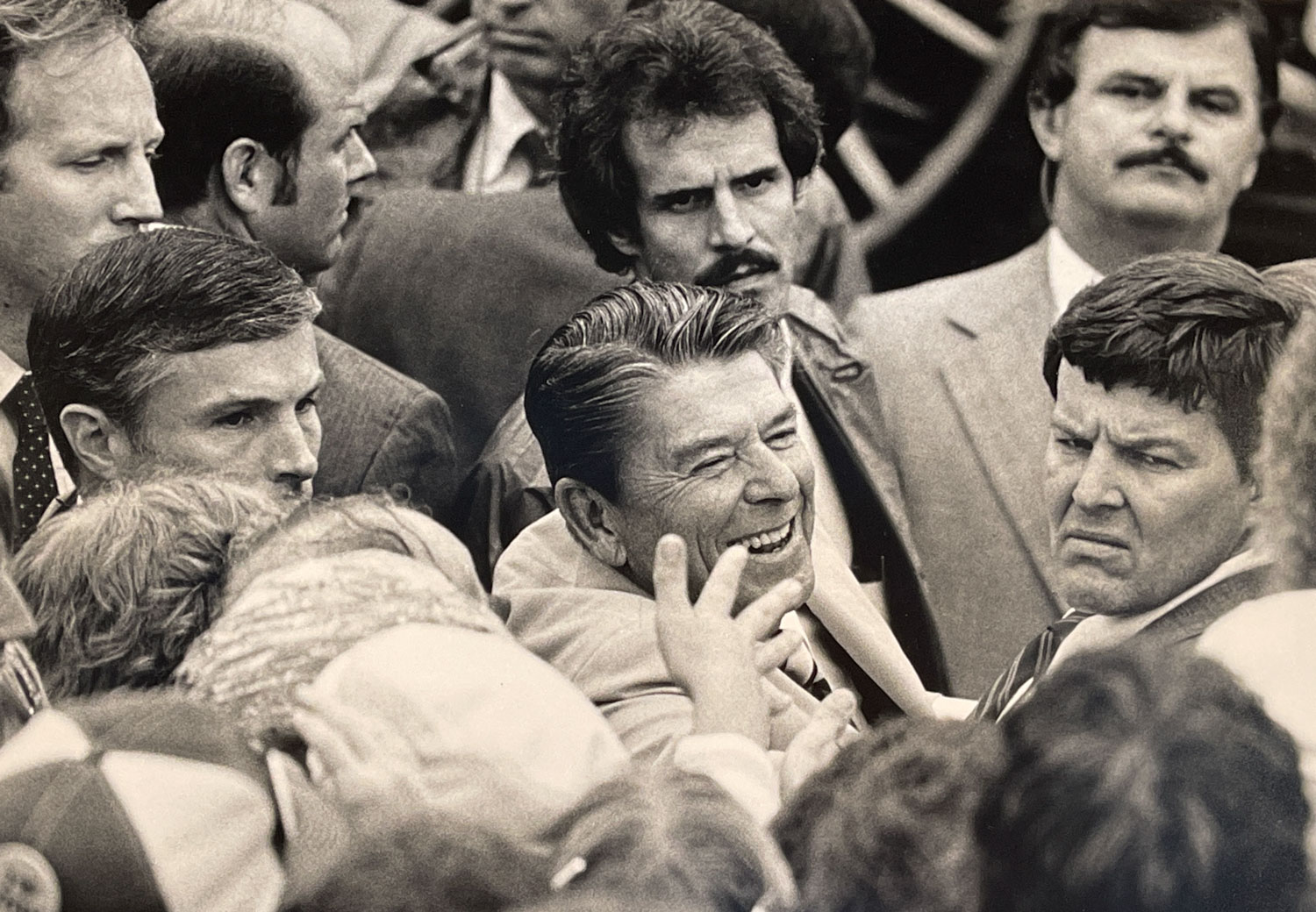Whither the GOP?
Photos by Forrest Anderson
Last week’s occupation of the U.S. Capitol in Washington by rightist protesters came as a major shock to the United States, with many Americans asking how the GOP got there from its beginnings as the party of Abraham Lincoln.
Let’s take a look back through history to try to get our head around the recent events in Washington and then consider where the party is headed, what it means for democracy and what the party's options are.
(Disclaimer: This blog is intended as an informed observer’s realistic look at the party’s situation. I’m not a political advocate for any party. I’m a long-standing independent who has voted for members of both parties depending on the issues of the day and a journalist/historian who has extensively covered and written about both parties. I’m not a true believer in any political figure.)
Before Donald Trump, the Republican Party and America’s far right had a long history of white supremist and conspiracy theory groups building movements that helped Republicans get out the vote but then being marginalized after the party has gotten in power.
Because America has a two-party system in which Republicans and Democrats have had to compromise with each other to govern, the government has traditionally been centrist. Moderate Republicans and Democrats, or at least those who posed as moderates, have traditionally held national power. That’s not to say that there haven’t been powerful rightist or leftist members of Congress, but they have had to work with more moderate members as part of issue-based coalitions to pass laws and have an impact.
As a result, far-right and far-left groups for the most part have been on the fringe of American politics. There has been a national consensus that a moderate centrist approach to running the federal government, even though many more rightist or leftist Americans may disagree on specific issues and at times hold more clout in state and local governments, is necessary to uphold the United States as a democracy.
Even very conservative presidents who drew support from coalitions that included far-right groups have adhered to this view while in office, working with members of the opposite party and complying with the norms of conceding lost elections and gracefully stepping down in defeat.
As a result, when compared with politics in Europe and some other countries, the United States historically has not had either nationally strong far-right or far-left political parties. There are obviously exceptions, which I will address below, but they’ve been fairly short lived. There has been a consensus since the Civil War that the nation needed to correct its course when it tacked far to the right or left in the interest of preserving a Union which gives all American citizens an exemplary, fairly stable level of personal freedom.
This ability to compromise to peacefully govern a fractious population which comes from every country, race, social class, religion and personal persuasion on the globe has had an amazing power to hold the United States together. This is despite a multiplicity of differences that are unlikely to ever be resolved. It is the one point that most Americans before Trump agreed upon and the hinge upon which our personal freedom has swung.
Along with this has come a cultural tolerance for differences that, while it mystifies many people of more homogeneous nations, has created an environment that many of them aspire to live in. Even very conservative Republicans believed that it was their duty to keep radical rightist views in their party in check and work with Democrats to shape functional governance for all.
The Trump administration attempted to shred this long-standing consensus by labeling as patriotic rightest fringe elements of the GOP, refusing to concede the election and eventually whipping up the crowd that stormed the Capitol last week.
Trump isn’t the first American politician to embrace the violent conspiracy-driven fringe of American politics and try to bring it into the mainstream. Among the most prominent past examples are Republican Senator Joseph McCarthy’s 1950s witch hunt against people who he branded as communists and Democrat segregationist George Wallace’s 1968 third-party campaign to try to force a contingent election in the House of Representatives. McCarthy damaged many innocent people’s lives before being discredited and censured by the U.S. Senate, and Wallace’s attempt failed to attract enough voters.
So how did we get to where we are now?
The Democratic Party was founded in 1828 to promote President Thomas Jefferson’s ideals of an agrarian society with a small supporting government. Andrew Jackson, the first Democrat president, developed Jefferson’s philosophy to include increasing industrialization.
The Republican Party was founded in 1854 from the ashes of the Whig Party. In the run-up to the Civil War, early Republicans had watched wealthy slave owners take over the Democratic Party and use the government for their exclusive benefit. Workers were afraid that slave owners could stack the legal deck against them to keep them from prospering in this environment. The GOP as a result became devoted to restricting the expansion of slavery into more states and territories. The party elected its first president, Abraham Lincoln, in 1861. In response, Southern slaveowners launched the Civil War.
Lincoln’s vision was a nation in which workers were the engine for unlimited economic growth. He believed that if they had resources and education, their production would outproduce their consumption. They would support shopkeepers and small businessmen who in turn would support industrialists and financiers, who in turn would hire workers. Living standards would improve, and social conflicts would diminish. Lincoln’s government provided homes and education for the poor, protected national industries and freed slaves, while jumpstarting an industrial economy amid the Civil War.
After the Civil War, however, Republican turned against union workers for fear they would destroy economic harmony and abandoned the idea of promoting equality for the poor in favor of supporting industrialists with the idea that they created jobs. This was an early version of Ronald Reagan’s “trickle down” theory. By the 1880s, wealth was concentrated among an elite, with most Americans working in fields and factories or poverty stricken. Democratic voters argued that Congress instead should keep the economic playing field level by protecting workers and farmers.
Probably the most infamous post-Civil War election before the recent one was in 1876, when the election went to the House of Representatives. Republican Rutherford Hayes, in a departure from GOP support of African American rights, won by caving into Southern Democrats’ demand that Union troops be pulled from the South. He avoided another Civil War, but left African Americans at the mercy of Southern Democrats whose oppressive Jim Crow laws stripped them of voting and other basic rights for almost a century. This wrong wasn’t righted until civil rights legislation of the 1960s and later.
In 1884, Republican James G. Blaine, who was widely thought to be beholden to railroad corporations, lost the presidential election to Democrat Grover Cleveland, who advocated the government abandon pro-business extremism and protect all men. Republican leaders, who believed that Democrat policies increasing immigration, industrialization and urbanization would cost them votes and economic leverage, accused Cleveland of stealing the election. In 1888, GOP candidate Benjamin Harrison lost the popular vote by 100,000 votes, but won because of a shift in the Electoral College. Republicans also took the House and Senate.
Republicans added six western states to try to guarantee that they would hold the Senate and swing the Electoral College to Republicans. They replaced partisan color-coded ballots with secret impartial ones that required higher literacy. They claimed that Democratic victories proved the electoral system was rigged. They launched aggressive campaigns against immigrants and union workers who voted Democrat, saying that their basic rights were un-American demands for special treatment. As a result, faith in the electoral process plummeted along with treatment of minorities and workers. Many feared the Republicans were turning the United States into an authoritarian oligarchy.
A huge backlash over GOP political maneuverings, propaganda and demonization of opponents resulted, and voters backed leaders who restored the Republican Party to more moderate principles. I became aware of this history when researching my family’s experience in Colorado, where my great great grandfather refused to run for county commissioner for the extremist wing of the party. He then was recruited by moderates to run against an extremist candidate who ended up winning. Shortly thereafter, the extremists were ousted nationally and the local newspaper reported that my ancestor had emerged with an intact reputation for having stood up to them.
Republican William McKinley won the 1896 presidential election, but younger Republicans critical of policies that concentrated wealth at the top of society rose to the fore. They favored using the government to educate people and guarantee clean cities, safe food and fair wages. Under Theodore Roosevelt, they committed to return the party to Lincoln’s progressive principles. From the end of the Civil War until before World War I, Republicans were more likely than Democrats to provide relief for the poor and to decry discrimination against African Americans.
Republicans always were more anti-immigration than Democrats, more inclined to bring religion into social issues, and less sympathetic to labor unions. That didn’t mean that Republicans didn’t sympathize with the working classes, but they were inclined to enact measures such as protective tariffs as remedies. We saw this approach in the Trump administration.
Under conservative President William H. Taft in 1912, the Republican Party moved to the right, but then toward the small government, pro-business mentality that the party is today associated with and that many Republican business elites in Washington continue to push for.
At this point, the Democratic Party was not considered liberal. Woodrow Wilson and a number of Democratic presidential candidates were conservatives. The liberal label wasn’t applied until Democrat Franklin D. Roosevelt defeated Republic incumbent Herbert Hoover and fought the economic devastation with bold government intervention. Roosevelt’s New Deal coalition was made up of blue collar workers, farmers, poor people, intellectuals and minority groups that remain the Democrats’ base today. Conservatives were dismayed by the growth of government intervention and have continued to oppose many New Deal-style policies since.
The 1964 presidential election was a landslide victory for liberal Democrat Lyndon B. Johnson over conservative Arizona Senator Barry Goldwater, but the result belied Goldwater’s continuing influence on the Republican Party up to the present. He was a far-right candidate who wanted the government as small as possible, the budget balanced, a hawkish foreign policy, and the dismantling of New Deal programs such as farm subsidies. He opposed the key Civil Rights Act of the 1960s. The only major element of the far-right platform that was added after Goldwater was Christian conservatism. Goldwater, in his speech accepting the Republican nomination, declared: “Extremism in the defense of liberty is no vice…. Moderation in the pursuit of justice is no virtue.”
It was with reluctance that Goldwater, in the interest of winning the election, denounced John Birch Society founder Robert Welch, who propagated the theory that former GOP President Dwight D. Eisenhower was an agent of a Communist conspiracy and the U.S. government was under communist control. Goldwater did so under pressure from influential conservative William F. Buckley, Jr., editor of the National Review, who believed that responsible conservatives needed to keep Welch and other far-right conspiracy theorists in check.
Goldwater drew support from Southern conservatives, businesspeople, Midwesterners, and libertarians while alienating moderate and liberal Republicans. He sought to marginalize moderates in his party, saying in his acceptance speech that “any who do not care for our cause” didn’t belong in the GOP.
He went up against wealthy Republican elites such as New York Gov. Nelson Rockefeller.
"Sometimes I think this country would be better off if we could just saw off the Eastern Seaboard and let it float out to sea,” he declared. This view remains today among many rightist Republicans.
Goldwater held Goldwater rallies similar to Trump’s, sometimes a dozen a day. Among his major goals were appointing conservative judges who prioritized individual rights and fighting crime and lawlessness. He disliked the mainstream media.
Goldwater wrote the best selling book The Conscience of a Conservative, which became a New York Times bestseller and is still on right-wing recommended reading lists and is required reading for many college courses.
Goldwater’s views moved gradually into the Republican mainstream over the next decades. The Southern conservative wing continued to be a powerful part of the Democratic Party in the 1960s and to some extent into the 1970s. Democrat George Wallace ran for president with support from the Ku Klux Klan, neo-Nazis, Minutemen and other far-right movements. Republican Richard Nixon picked up some of Wallace’s supporters when he ran for president in 1972, but he disillusioned the right when he opened relations with China and supported more liberal policies domestically.

Richard Nixon in China. He became a pariah because of Watergate and became disliked by rightists as he pursued more centrist policies. He remained highly popular in China long after his presidency because of his role in opening China to the world.
Ronald Reagan had publicly supported Goldwater’s views, and conservatives tried to draft him as a third-party candidate in 1976. He instead ran and lost against Gerald Ford in the Republican primaries. Ford was defeated in the general election by Democrat Jimmy Carter, which prompted National Review publisher William Rusher and other conservative Republicans to the New Right. This effort won Reagan the 1980 GOP presidential nomination and the election.
As president, Reagan pursued Goldwater-like policies. Reagan and his successor George Bush moved America toward the right in general, but far-right populists believed that Reagan and Bush had capitulated to liberals on racial liberalism, public welfare and immigration. The rise of the religious right in the 1970s and ’80s placed fighting liberalism, socialism, and communism under a broader umbrella of fighting “secularism.”

George Bush on a diplomatic trip to China. Bush was an internationalist whose moderate policies were anathema to devoted rightists in the party as well as many Democrats who thought he was soft on China. His son later faced similar but more vociferous opposition from the GOP right.
In 1991, Ku Klux Klan Grand Wizard David Duke won the Louisiana governor’s race and then unsuccessfully ran in the 1992 presidential primaries on the platform that White Christians were being dispossessed because of non-White immigration, high Black birthrates and welfare spending. Pat Buchanan, a former Nixon strategist, also ran and lost, but recommended that the GOP co-opt Duke’s more popular issues that didn’t conflict with Republican principles.
The fall of the Soviet Union deprived Republicans of us vs. them Cold War rhetoric, but Buchanan gave a prime-time speech at the 1992 Republican National Convention that swapped it out for the eventually ubiquitous term “cultural wars.” He demanded that Republicans take America back from “radical feminists,” abortion rights advocates, gay and lesbian activists, and environmentalists “block by block.” Buchanan ran again in 1996 supported by the Christian Coalition and American Conservative Union, but lost to Bob Dole in the primaries.
Democrat Bill Clinton won the presidency in 1992 and 1996, and pursued a centrist agenda that declared the end of the era of big government and embraced some conservative causes such as financial deregulation and abolishing parts of the welfare system. Volatile Republican House Speaker Newt Gingrich engineered the 1995 government shutdown and branded people he disagreed with as socialists.
The creation of Fox News in 1996 gave conservatives a major 24/7 platform. Fox News and best-selling conservative books propagated the view that anything-goes strategies were justified to prevent the party losing power.
Tension between GOP moderates and the far right continued during George W. Bush’s administration, when the Tea Party movement emerged on the right. The Tea Partiers became influential enough that long-time moderate Senator John McCain felt compelled to choose Tea Partier Sarah Palin as his running mate in 2008. The Tea Party had little broad appeal, however, and Barack Obama won the presidential election.
The Tea Party, a loosely organized grass roots movement of conservative voters and far-right groups, considered Obama socialist, opposed his health care reforms, and blamed undocumented immigrants for the economic downturn. Local Tea Party groups met in churches, libraries or restaurants and collected small contributions or sold books, bumper stickers and pins. The views of grassroots Tea Party activists and of many other Republican-leaning voters centered around sociocultural changes in the nation, anger and fear about immigration and what they saw as uncontrolled welfare spending on the poor, minorities and young people. Many Tea Partiers, who tended to be older and White, benefitted from Social Security, Medicare, military veterans’ programs, and employment benefits and did not want those programs cut. About half were Christian conservatives, but banning abortion and repealing gay marriage weren’t the main concerns of most. Border security was central to Tea Party ideology, even in states where there were low levels of undocumented immigration.
Many Tea Party groups were concerned that the country was not that of their youth. Obama, who ran on an explicit platform of change, was seen as a threat to their way of life, often in ways that were far out of proportion to his actual views and policies.
The Tea Party was never a single organization. Fox News and other conservative media outlets covered the Tea Partiers extensively, channeling their dislike for Obama and Democrats in Congress. Professional advocacy organizations joined in, offering buses to carry Tea Partiers to rallies where the organizations’ operatives gave speeches. Ordinary conservative citizens and community activists volunteered. Roughly 15–25 percent of all Americans sympathized with the Tea Party, half of whom identified as Republicans.
The Tea Party contributed to high turnouts of older white voters that propelled GOP electoral victories in 2010, but the Tea Party wasn’t controlled by party regulars and Tea Partiers often supported candidates that GOP leaders didn’t like because they were too conservative to do well in general elections. Mitt Romney, a moderate, was not well liked by Tea Party voters.
The Tea Party provided a new home for conservative activities, with funding from Republican business elites and reinforcement from conservative media. As such, it pulled the Republican Party to the far right. Tea Party protests and rallies grew in size and Tea Party activists and supporters were active in dozens of Republican primary races.
The Tea Party tapped into the existing conservative policymaking infrastructure in Washington, and social networks linked to churches.
Fox News played a major role in amplifying the Tea Party. Studies of Fox coverage of Tea Party events and activities show more on-going coverage of the Tea Party and its views than mainstream media, which tended to cover only major Tea Party events. The advocacy organization Tea Party Express, a Republican PAC project, sponsored bus tours that transported supporters to rallies and other events. The Tea Parties became part of a loose coalition that also included wealthy conservative funders, national advocacy groups and think tanks such as Heritage Foundation and the Cato Institute and conservative media. Some leading activists wore multiple hats as chairpersons of both Tea party and GOP organizations, bloggers and employees at conservative organizations.
Fox News and entertainment, conservative talk radio and conservative bloggers became a media bubble in which many conservatives began to live almost exclusively. Just 11 percent of Tea Party supporters reported getting news from other major networks. Fox hosts Glenn Beck, Sean Hannity and others broadcast from Tea Party events and even co-sponsored them. In the process, the influence of Fox News and other conservative media outlets reshaped mainstream public debate. Fox News and other conservative outlets were amplified by social media, which placed few restraints on extremist posts. Fox News acted as an infrastructure for the right.
Tea Partiers generated the conspiracy theory around Obama’s birth. Donald Trump, who had hitherto been unable to gain traction in either party for his long-standing presidential ambitions, picked up the theory and ran with it. It launched his national political career and realigned the GOP base in a way that demonized his opponents and celebrated his authoritarian views.
Trump brought long-standing far-rightists such as Stephen Bannon and Stephen Miller into his administration and the GOP mainstream. He called the Black Lives Matter movement terrorists, praised Bikers for Trump and said they would attack his political enemies, and encouraged supporters of the far-right conspiracy theorist group QAnon, which the FBI has identified as a terrorist threat.
After the civil unrest that followed the police killings of Breonna Taylor and George Floyd last May, a network of armed paramilitary groups and individuals called the Patriot Movement gained momentum and followers. Thousands of armed militia participated in counterprotests nationwide in a backlash against Black Lives Matter. On the state level, mainly in the West, Republicans openly worked with militias and far-right groups that advocated violence. Most of these patriot organizations say they aren’t racist, but they rapidly expanded in response to Black Lives Matter and many said they were willing to use violence. The Trump administration praised them.
Trump’s views are a mixture of Goldwater’s, Reagan’s criticism of free trade and internationalism and the most virulent anti-immigration policies since before World War II. He pushed the Republican Party far to the right on protectionism and widely disregarded international norms. Under him, the nation has become locked into a downward cycle of extreme language on either side, which many more moderate citizens or and those who were not interested in politics resented being pulled into. Trump’s belligerence alarmed non-white populations who moved further to the left as a result. Trump sought to realize Barry Goldwater’s dream of cutting moderate Republicans out of the ranks.

The Trump era brought in extremist rhetoric and both intense devotion to and intense dislike of a single political leader the likes of which the United States has not seen at any point in its history but which has been characteristic of authoritarian governments elsewhere.
The GOP has reached a point where either extremism wins and culminates in violence or moderate forces on both sides take the momentum away from extremists.
The Manifesto Project and other similar research projects that have long analyzed the platforms of political parties in Western Europe, the United States and Canada, say that the GOP is now further right than fringe far-right populist parties in Britain and France and its positions on nationalism, globalization and immigration more closely resemble those of extreme right parties in Hungary and the AKP in Turkey. In the latter two countries, those parties have actively worked to dismantle democracy. Meanwhile, the Democratic Party is now closer to mainstream liberal parties in Western European countries. Thus overall, the United States is to the right of other advanced countries. This is notable because historically, the U.S. two-party system has generated moderate parties.
Experts in comparative politics say that the danger in a country’s slide toward authoritarianism on either the left or the right lies in anti-democratic strategies. Because democracy depends on compromising to reach consensus, it generally doesn’t work well with the kind of polarization we are seeing in the United States. The Republican Party is moving away from the political standards of the developed world and toward a battle over democracy’s core premise, that power should be shared.
Many people, including moderate Republicans, have concluded that reforms are needed to stem the slide into authoritarianism, particularly in the party’s non-pluralistic stance, hostility toward minority rights and increasing disdain for democratic procedures and fair voting practices. These are all characteristics of authoritarian rulers who initially win power in elections, then make changes in the electoral system to ensure that one party dominates the government and that that party controls oversight organizations and the judiciary and curbs the mainstream media and academia
The stance that has emerged among many Republicans that they must win because Democrats can’t be allowed to share power has promoted practices such as distorted gerrymandering that are outside the tradition of advanced, healthy Western democracies.
The Republican Party currently is hung together by three major factions that have united in their determination to dominate the three major government branches. The factions include conservative business elites who want to cut taxes and reduce government regulation of business; evangelicals who want to make America a Christian nation; and alt-righters who want to purge the rights of minorities and women and limit immigration. Under Trump, political organizations funded by wealthy conservatives shifted funding away from the moderate GOP apparatus toward the conservative agenda.
The party embraces potentially fracturing contradictions. Most GOP candidates espouse free-market, small government ideas, but many don’t want to cut education or the Environmental Protection Agency. Bashing unions, slashing taxes for the wealthy, blocking environmental protection and dismantling Social Security are not key issues for many conservatives.
To preserve democracy, the Republicans will have to run more on issues that appeal to a broad section of the public. Issues such as racism, abortion rights and gun rights don’t carry enough broad appeal for them to win general elections with these issues alone. They have to cease disinformation and become truthful to regain the trust of voters in general. They will have to stop undermining elections to hold onto power.
The United States’ demographics are expected to move against the party unless it broadens its appeal. In 2016, 71 percent of eligible voters were white, and Trump won 57 percent of them. In 2020, he captured the same percentage of white voters, but they made up just 65-67 percent of the electorate. Whites are expected to be a minority by 2045 and fewer Whites consider racial dominance desirable, so race is becoming less of a decisive issue. As this demographic change has proceeded, the GOP coalition has turned more to extreme positions on climate, guns, race-based nationalism and health care and to fearmongoring and votor suppression strategies.
The loss of the presidency, House and Senate in the 2020 election was a wakeup call that extremism is a risky strategy because it creates limits for the party to grow in broad popularity and because many far-right candidates have little allegiance to the GOP and are distinguished by a refusal to compromise.
In addition, policy differences between elite Tea party funders and their grassroots activities may come to the fore and conservative Republican funders may be moving away from Trump to preserve the credibility of their business brands post-Capitol attack. If social media companies continue to follow suit and Fox News backs away to a more mainstream stance, the far-right could end up back in its traditional fringe space.
Trump’s departure from the White House won’t ensure the future of American democracy. The Republican Party will have to recommit to closing the growing gap between its policies and the demographic reality that it is operating in a diverse society.
The Trump administration has made it clear that far right activities produce more political theater than reasonable compromise that leads to good governance. Catering to the far right is likely to continue only until it ceases to be an effective path to gaining political power.
Check out these related items

Election Perspective
On a day that included both voting and getting tested for COVID-19, we look to the past for perspective on elections.

Getting A Vaccine against Racism
A mother of non-white children compares her fears for her children because of COVID-19 and her fears for them because of racism.

The Real Cost of COVID
Exit polls showed that many voters saw boosting the economy and controlling the pandemic as competing goals, but experts say they need to happen in tandem.
